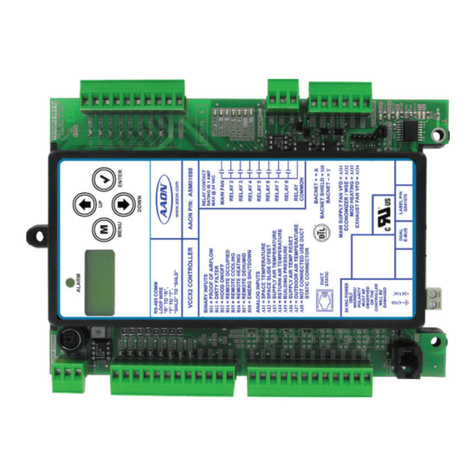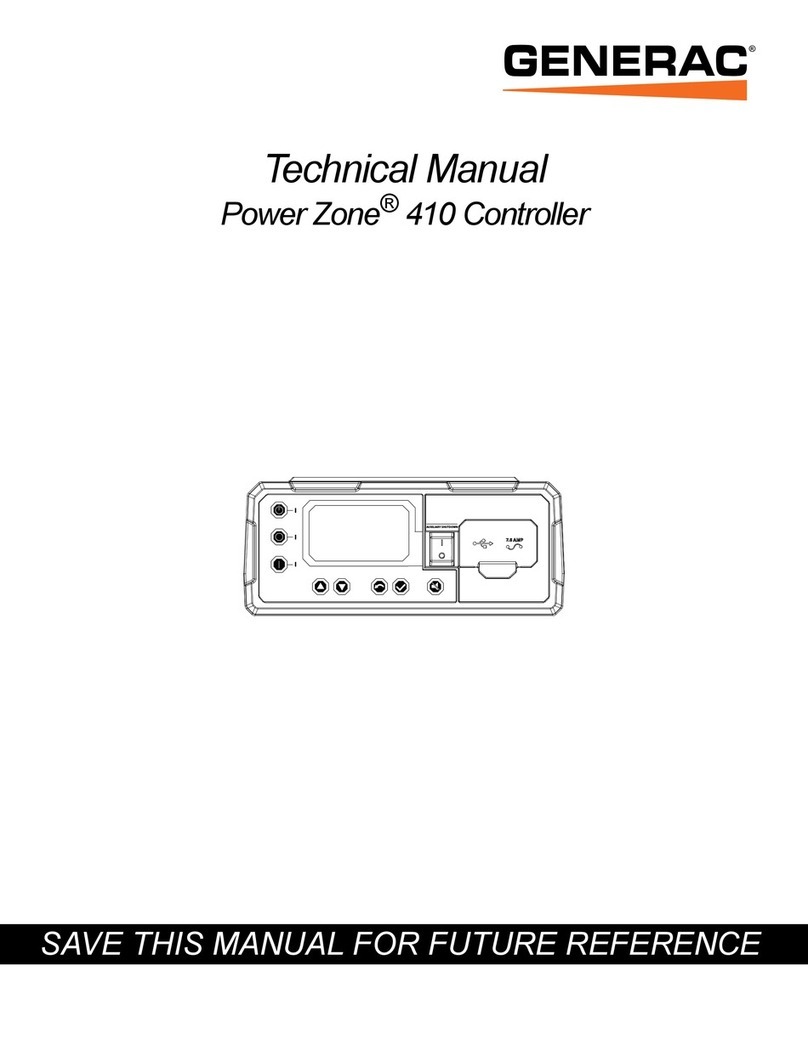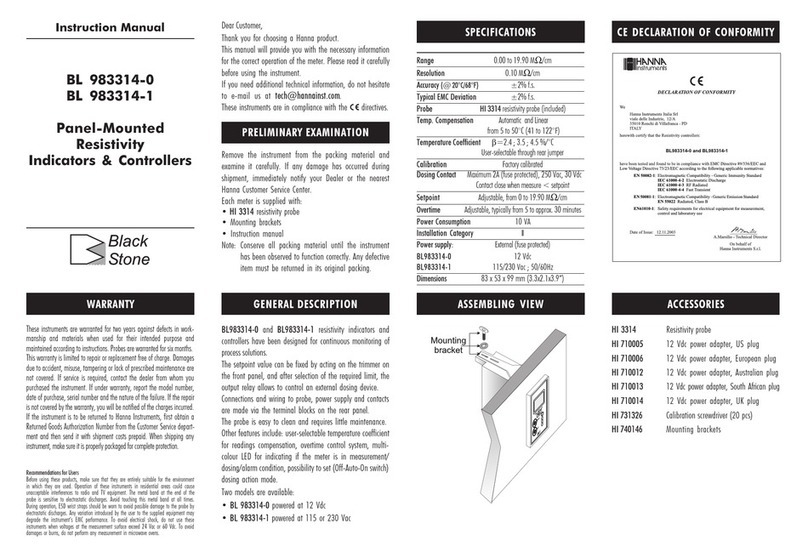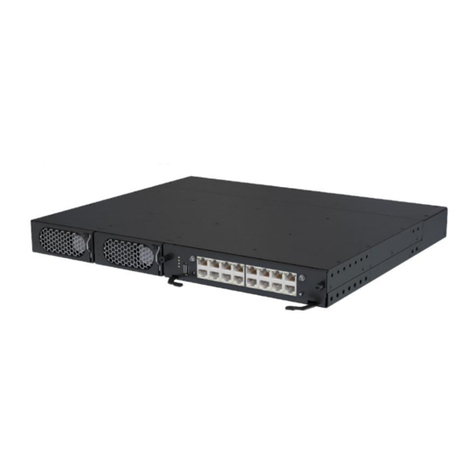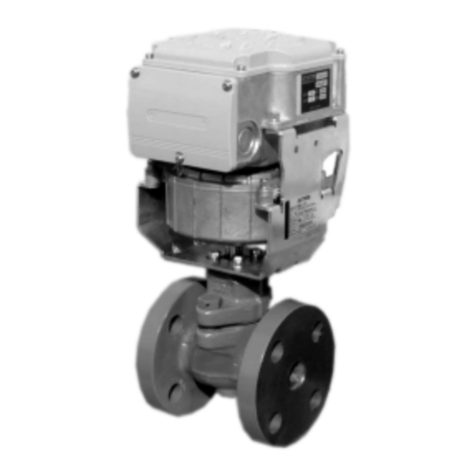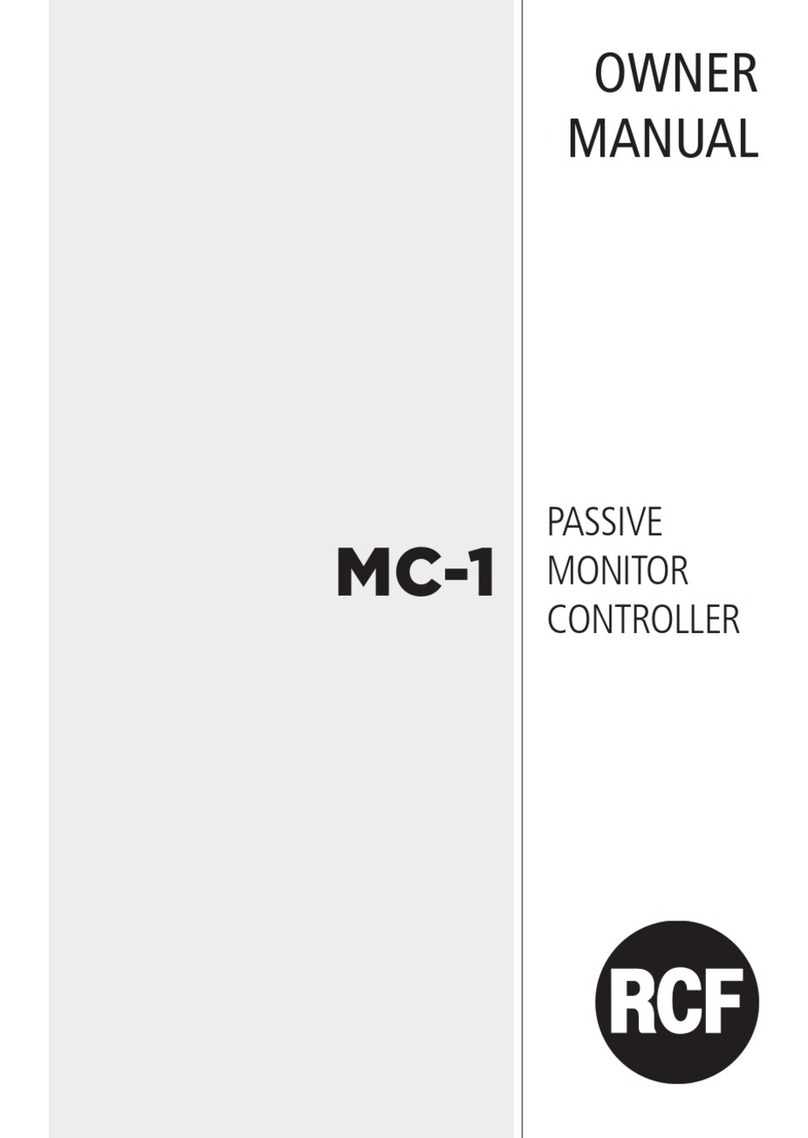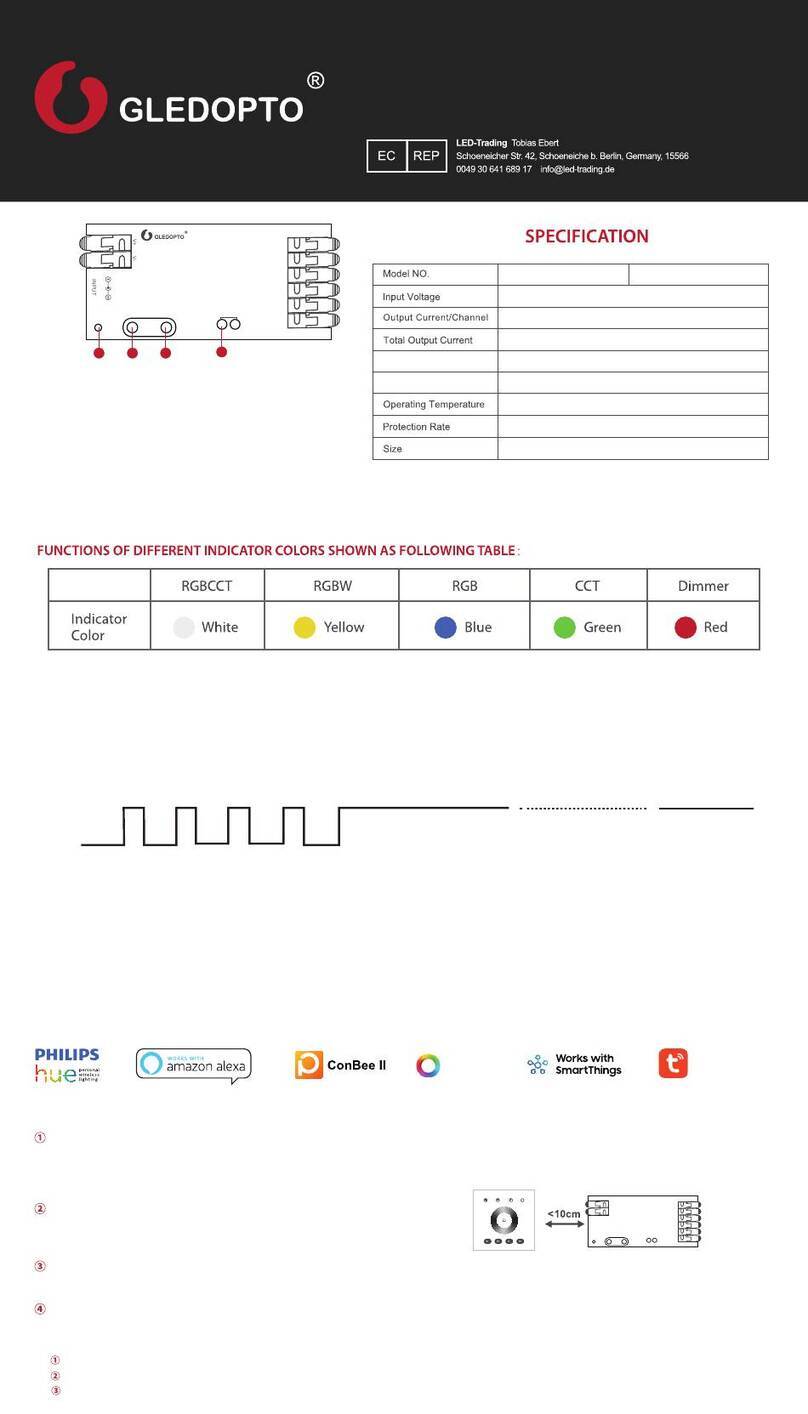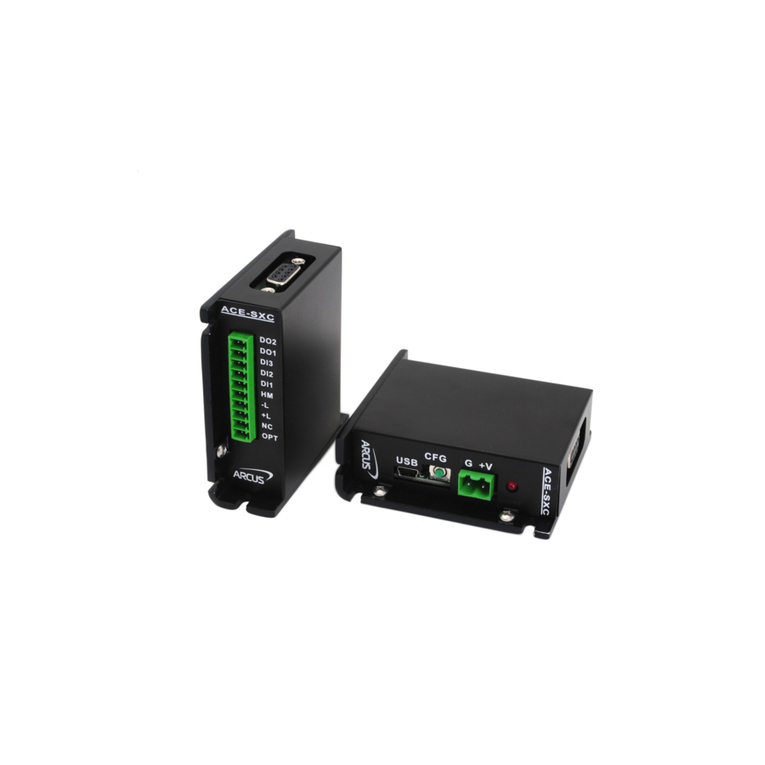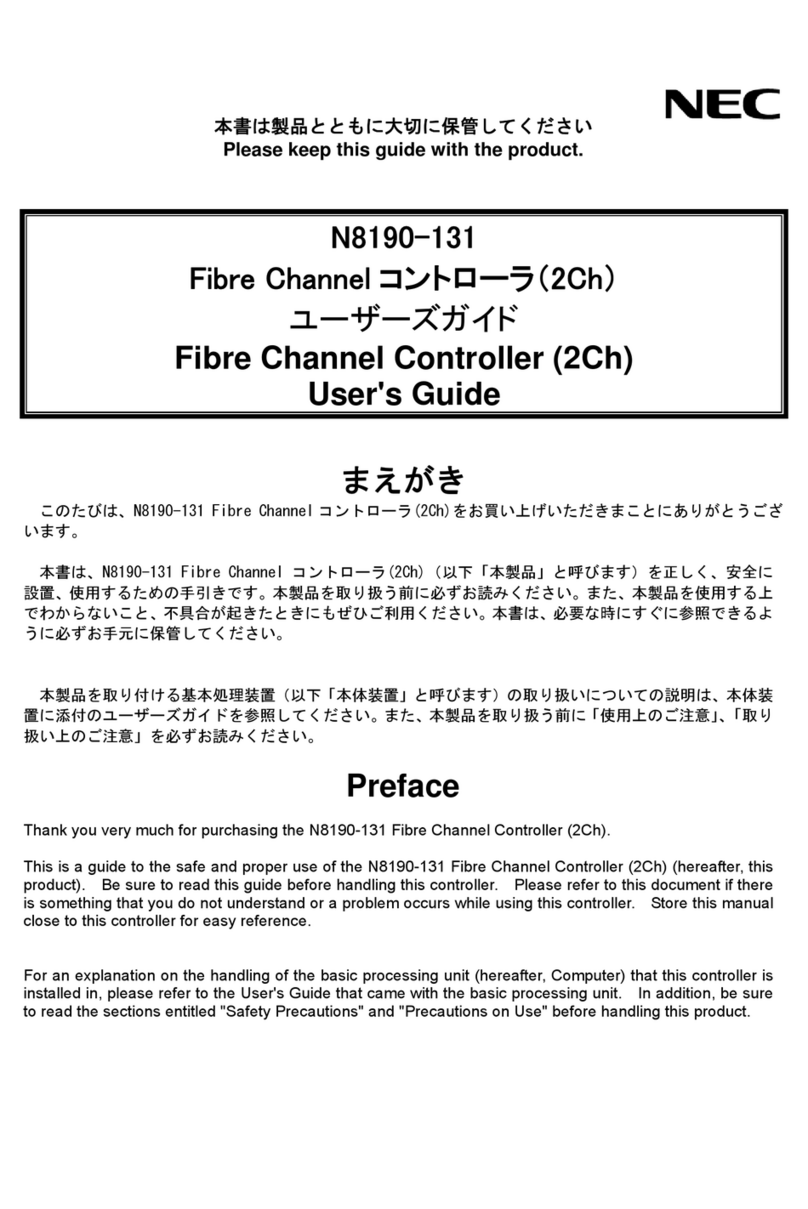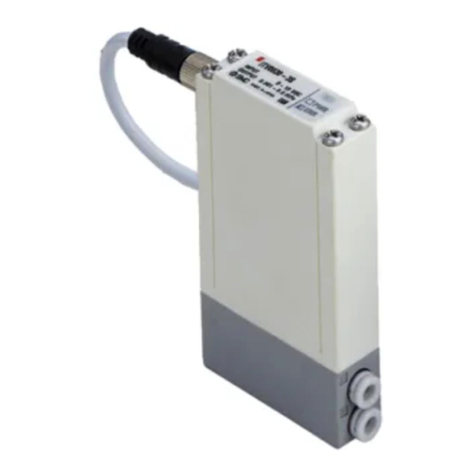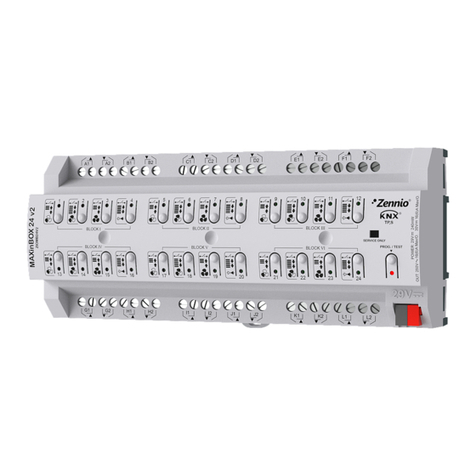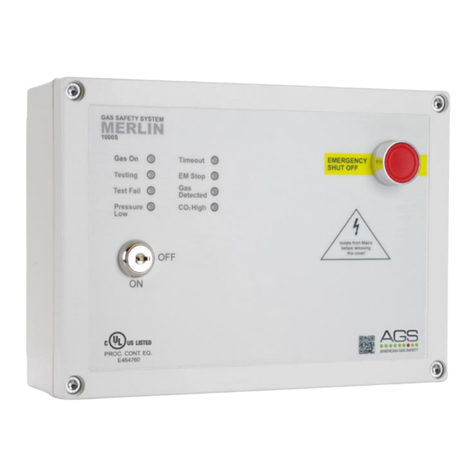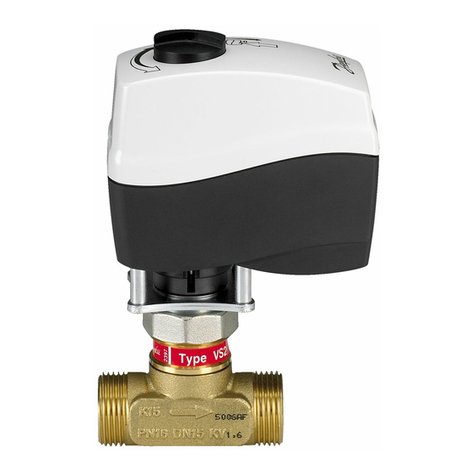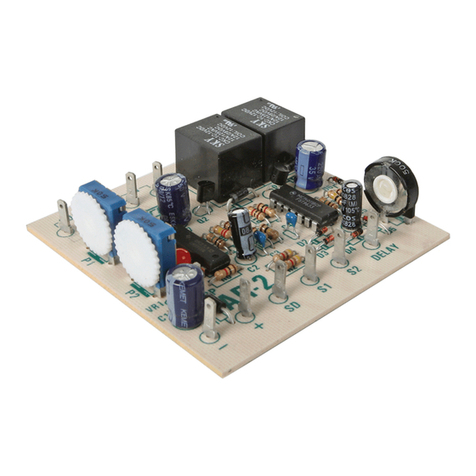Pressure Tech LF-690 Service manual

1
THE LF-690/691 SERIES
Operating and Service Manual
Series includes all variants of LF-690/691
Issue D
March 2020

2
TABLE OF CONTENTS
1. Description.............................................................................................................................3
2. Installation .............................................................................................................................3
3. Operation...............................................................................................................................4
4. Special Conditions for Safe Use .............................................................................................5
5. Hazardous Location Usage.....................................................................................................5
6. Servicing and Maintenance....................................................................................................5
6.1. Servicing the LF-690 regulator................................................................................6
6.1.1. Accessing the Unbalanced Main Valve Assembly (MVA)....................................6
6.1.2. Accessing the Domed Sensor Assembly (SA)......................................................7
6.1.3. Figure 1 –Sectional View of the LF-690 (with Domed SA/Unbalanced MVA)....8
6.2. Servicing the LF-690 Balanced Regulator ...............................................................9
6.2.1. Accessing the Balanced Main Valve Assembly (MVA) ........................................9
6.2.2. Figure 2 –Sectional View of the LF-690 Balanced MVA...................................10
6.2.3. Accessing the Threaded Sensor Assembly........................................................11
6.2.4. Figure 3 –Sectional View of the LF-690 (with Threaded SA/Balanced MVA)...12
6.3. Servicing the LF-691 regulator..............................................................................13
6.3.1. Accessing the Main Valve Assembly .................................................................13
6.3.2. Accessing the Sensor Assembly ........................................................................14
6.3.3. Figure 4 –Sectional View of the LF-691 (Long TW) ..........................................15
7. Technical Data.........................................................................................................16
8. Warranty Statement ............................................................................................................16

3
1. Description
The LF-690 is a single stage piston sensed pressure regulator, capable of a maximum 690 bar
inlet pressure. This can then be controlled to a range of outlet pressures depending upon
the sensing arrangement. As standard, the LF-690 comes with a Tungsten Carbide main
valve and heat treated 17-4ph seat, which provides excellent resistance to erosion on
hydraulic media.
Ceramic Ball and Plug options are available which provide ultimate protection against the
harsh service encountered on hydraulic systems with the Ceramic Plug design allowing the
LF-691 to achieve up to 1380 bar inlet*.
The regulator is also available with balanced main valve options which allow high accuracy
control of both low and high downstream pressures.
The housing has been machined from 316 SS (17-4ph SS on the LF-691 high pressure option)
to ensure maximum protection against the media on which it will be used, and the
environment in which it will be placed.
*achievable with specific modification –Please contact the office for information.
2. Installation
Before system start-up, it is recommended that all systems be pressure tested, leak tested
and purged with an inert gas such as nitrogen.
Prior to placing into service ensure that the regulator is in the fully closed position, with the
adjusting mechanism turned completely anti-clockwise.
Check the model number reference to ensure that the pressure range complies with the
installation requirements.
Visually inspect the regulator for any signs of damage or contamination. If any foreign
materials are present and cannot be removed from the regulator, or if the threads on the
regulator appear to be damaged, please contact the office immediately to arrange for the
regulator to be returned for service.
The Inlet and Outlet ports are clearly marked. Select the correct size and type of connection
fittings for these ports which are indicated in the regulators part number. Both medium
pressure type (MP) ‘A’ and National Pipe Thread (NPT) ‘N’options are available on this
regulator. For NPT threads, ensure that PTFE tape is applied correctly to the fittings,
applying two overlapping layers in the direction of the thread, taking care that the tape does
not come into contact with the first thread.
Any gauge ports on the regulator will be 1/4” NPT unless otherwise stated. If any gauge port
is not required, ensure that the port is plugged prior to installation.

4
The media supplied to the regulator must be clean. Contamination can damage the seat
which may cause the regulator to fail. Filtration suited to the application is recommended
upstream of the regulator.
Should further assistance or information be required in relation to installation of any
Pressure Tech regulator please contact the office, giving reference to the regulators part
number and/or serial number.
3. Operation
Turning the hand wheel (or T-Bar) clockwise compresses the load spring, which in turn
opens the main valve, and allows the inlet pressure to pass through the orifice until the
outlet pressure is equivalent to the loading forces set by the compressed spring.
The LF-690 incorporates a segregated captured vent, which allows the outlet pressure to be
reduced whilst turning the hand wheel anti-clockwise. Excess pressure is vented off through
the ‘Vent’ port marked at the bottom of the regulator. This port should not be plugged or
blocked at any time.
The LF-690 series may be offered with pressure limiting, pressure locking or pre-set pressure
options:
Pressure limited regulators are fitted with locknuts on the adjusting mechanism in order to
limit the maximum allowable downstream pressure. Regulators fitted with pressure limiting
locknuts will state the limited pressure on the regulator label and this will also be indicated
in the part number.
Pressure locking regulators are fitted with a locking cap which may be set (when specified)
to pre-determined requirements. It is secured in place by three M5 grub screws which lock
against the bonnet of the regulator creating an anti-tamper device to ensure the pressure
cannot be adjusted accidentally.
Pre-set pressure regulators are adjusted (factory set) to specified customer requirements
within a given pressure range.
Both pressure locking and pre-set pressure regulators will be fully adjustable through a
given pressure range and the maximum allowable working pressures will be indicated on
the regulator label and in the part number.
*Note - A table is available on request defining allowable tolerances for set points within a
given pressure range.

5
4. Special Conditions for Safe Use
Turning the hand-wheel (or T-bar) anti-clockwise (with pressure on the outlet) should be
refrained on non-venting regulators. Pressure should be reduced in this case by venting
downstream of the regulator, and turning the hand wheel simultaneously anti-clockwise.
5. Hazardous Location Usage
This equipment has not been manufactured specifically for use in potentially explosive
atmospheres and as such an ignition hazard assessment has not been carried out on this
product. If the user should wish to use this product in such an environment where there
may be a potentially explosive atmosphere then it is the responsibility of the user to
conduct an ignition hazard assessment against 99/92/EC.
6. Servicing and Maintenance
With so many variants of the LF-690 available, the following section uses three examples
with the aim of covering most options. The product supplied may vary from these examples.
Should any assistance be required then please do not hesitate to contact the office.
Servicing and maintenance work on the LF-690 regulators should only be performed after
fully reading and understanding the Operating and Servicing Manual. Due to the
compressibility of gases, the operator should not endanger themselves or others by working
on this regulator without prior knowledge of the Health and Safety risks relating to handling
of technical gases. Any uncertainty should be clarified with Pressure Tech before working on
the regulator.
Pressure Tech Ltd recommends the use of the following Lubricants/Adhesives during
servicing:
-Krytox GPL 205 lubricant:For the O-rings.
-Molykote 1000 paste: For the adjusting screw.
-Loctite 638: For the lower spring rest thread.
Prior to commencing service, please ensure that:
-The equipment has been de-pressurised
-The load spring has been de-compressed by turning the adjusting mechanism fully
anti-clockwise
-Applications involving toxic, flammable or corrosive media have been fully purged
To ensure the best possible results from servicing, when re-assembling the regulator and
any assemblies within it, ensure that all areas of the components and the regulator body are
cleaned and free from contaminants which may result in failure of the regulator.

6
6.1. Servicing the LF-690 regulator
*Note: Fig 1 should be used as a reference for the following set of instructions
6.1.1. Accessing the Unbalanced Main Valve Assembly (MVA)
To access the Main Valve Assembly:
i. Firmly clamp the flats at the bottom of the regulator in the vice, with the bottom
nut (7) facing up.
ii. Remove the bottom nut (7) from the body (1).
iii. The valve spring (6), shuttle (4), seat cartridge (5), ceramic ball (9) and ceramic
seat (2) can now be removed from the assembly. It may be necessary to remove
the regulator from the vice to do so.
iv. The connector pin (8) may also be withdrawn at this point by up righting the
regulator with the main valve assembly removed.
v. Care should be taken when reassembling not to damage the sealing face of the
connector pin (8). Needle nose pliers should be used to replace the connector pin
chamfer down into the body while the body is up-side down. The pin should
locate within the baffle plate (3).
vi. The new ceramic seat (2) should be placed in the seat cartridge (5) with the BS
806 ‘O’ ring (26).
vii. These can then be placed into the regulator body, being careful to ensure that
the ‘O’ ring (26) remains in place and that the seat cartridge (5) locates in the
correct place within the body (1).
viii. The ceramic ball (9) and shuttle (4) can then be placed into their location within
the seat cartridge (5).
ix. The main valve spring (6) can now be placed on the stem of the shuttle (4).
x. Replace the BS019 ‘O’ ring (25) and back up ring (28) on the bottom nut (7), then
assemble into the regulator body.
It is recommended that all parts in the repair kits are used. Any defect parts removed during
the service should be disposed of.
To ensure that the main valve assembly has been correctly and effectively installed it may
be required to perform the appropriate seat leak test as per ANSI/FCI 70-2.

7
6.1.2. Accessing the Domed Sensor Assembly (SA)
The loading mechanism and vent seat for the LF-690 can be accessed from the top of the
regulator. Ensure the spring is de-compressed by rotating the hand wheel fully anti-
clockwise and follow the instructions below:
i. Remove the securing grub screw (20) from the regulator body (1).
ii. Unscrew the pan screw (36) and remove the name plate (33) from the hand
wheel (35).
iii. Using a 24mm socket, unscrew the locknut (34) and remove the hand wheel (35)
from the adjusting screw (18).
iv. With the regulator secured up-right in a vice, remove the bonnet (31) by using a
torque wrench or equivalent with 47mm open end.
v. Un-screw and lift the top works from the assembly, inclusive of the bonnet (31),
load spring (15), adjusting mechanism (16, 17, 18 & 19) and lower spring rest (12)
from the body.
vi. The sensor assembly (10, 11, 13 & 14) can be removed from the body by using an
M5 bolt and pliers.
vii. If necessary, the baffle plate (3) and connector (8) can be withdrawn. Inspect the
connector for damage and replace if required.
viii. The vent seat (14) can be accessed by removing the sensor (10) from the sensor
holder (11) and gripping the sensor firmly in a vice with the vent seat nut (13)
facing upwards.
ix. The vent seat nut (13) can be removed using a 10mm open ended spanner and
the vent seat (14) can then be removed from the sensor (10) along with the 9mm
x 1mm ‘O’ ring (22).
x. Inspect the vent seat (14) for damage and replace if necessary.
xi. Replace all ‘O’ rings (21, 22, 23, 24, 29, 30 & 32) located on the sensor (10) and
sensor holder (11) prior to reassembly, ensuring adequate lubrication is used.
xii. Place the connector (8) into the baffle plate (3) and locate into the regulator
body, taking care not to damage the sealing edge of the connector.
xiii. After reassembling the sensor (10) and holder (11), place the assembly into the
regulator body (1) ensuring that it is firmly in place.
xiv. Remove the M5 screw from the sensor holder if used.
xv. Screw the top works onto the regulator body and using a torque wrench, tighten
to 120Nm.
xvi. Tighten the securing grub screw (20) against the bonnet (31).
xvii. The hand wheel (35) can now be secured on to the adjusting screw (18) using the
locknut (34).
xviii. The name plate (33) can then be secured using the pan screw (36).
It is recommended that all parts in the repair kits are used. Any defect parts removed during
the service should be disposed of.
Replacement ‘O’ rings should be lubricated with suitable non-hydrocarbon grease such as
Krytox GPL 205.

8
6.1.3. Figure 1 –Sectional View of the LF-690 (with Domed SA/Unbalanced MVA)
© Copyright of Pressure Tech Ltd
Parts List
Item
Part Number
Description
1
PT-690-N-LF
BODY - N PORTING
2
PT-C-029-007
CERAMIC SEAT
3
PT-C-086
BAFFLE PLATE
4
PT-C-088-006-002
MAIN VALVE
5
PT-C-089-008
SEAT CARTRIDGE
6
PT-C-099
MV SPRING
7
PT-690-010
BOTTOM NUT
8
PT-690-011-011
CONNECTOR PIN
9
PT-690-017
CERAMIC BALL
10
PT-C-094
SENSOR
11
PT-C-093
SENSOR HOLDER
12
PT-C-095-001
DOMED SPRING REST
13
PT-C-091
VENT SEAT NUT
14
PT-C-029-013
PEEK VENT SEAT
15
PT-C-042
LOAD SPRING
16
PT-C-045
ADJUSTING NUT
17
PT-C-046
SCREW
18
PT-C-043-004
ADJUSTING SCREW
19
BEAR-51103-SS
SS BEARING
20
FIT-M3x6MM-SS-316-GRUBSCRW
M3 X 6mm GRUB SCREW
21
OR-0090-20
O' RING STD
22
OR-0090-10
O' RING STD
23
OR-0460-20
O' RING STD
24
OR-0420-20
O' RING STD
25
OR-BS019
O' RING STD
26
OR-BS806
O' RING STD
27
OR-0350-20
O' RING STD
28
ORB-BS019-PTFE
PTFE BACK UP RING
29
ORB-PT-C-139
PTFE BACK UP RING
30
ORB-PT-C-098-005
PTFE BACK UP RING
31
PT-C-040
BONNET
32
OR-0050-20
O' RING STD
33
PT-C-049
NAMEPLATE
34
PT-C-132
LOCK NUT
35
PT-C-048-001
LARGE HANDWHEEL
36
FIT-M3-08-A4-70.0-SKT-BTN
SCREW

9
6.2. Servicing the LF-690 Balanced Regulator
*Note: Fig 2 and 3 should be used as a reference for the following set of instructions
6.2.1. Accessing the Balanced Main Valve Assembly (MVA)
To access the Main Valve Assembly:
Disassembly
i. Firmly clamp the flats at the bottom of the regulator Body (1) in a vice, with the bottom nut (3)
facing up.
ii. Remove the bottom nut (3) from the body (1).
iii. The main valve spring (2), seat cartridge (9), main valve (8), washer (5), PTFE spacer (6), ‘O’ rings
and Backups (31,34,38,39,40) can then be removed Bottom Nut (3).
Note: It may be necessary to remove the regulator from the vice to do so.
iv. The connector pin (4) may also be withdrawn at this point by up righting the regulator with the
main valve assembly removed.
Reassembly
v. Use needle nose pliers to replace the connector pin chamfer down into the body, while the
body is up-side down. The pin should locate within the baffle plate (7).
Note: Care should be taken when reassembling not to damage the sealing face of the connector
pin (4).
vi. Place the soft seat (10) into the seat cartridge (9) with the ‘O’ ring groove on the seat facing
outwards and place the BS806 ‘O’ ring (32) into the groove.
vii. Holding the regulator upright, position the assembly (9,10,32) into the regulator body (1)
ensuring that it finds the locating bore, then turn the regulator body (1) upside down whilst
supporting the assembly (9,10,32) to ensure it does not fall out of place.
viii. Replace all of the ‘O’ rings and Backups (31,34,38,39,40) within and around Bottom Nut (3).
Note: The small back up ring (38) should be placed into the bottom nut (3) first, followed by the
3.6mm ‘O’ ring (34).
ix. Place the washer (5) into the small recess, on the top of the bottom nut (3).
x. Place/push the PTFE spacer (6), into the upper bore of the bottom nut (3)
Note: Add a small amount of Krytox lubricant to the underside of the PTFE spacer (6), before
placing into the bottom nut (3). This is to help the PTFE spacer from coming away from the
bottom nut, during assembly into the regulator body (1).
xi. Guide the main valve spring (2), over the stem of the main valve (8).
xii. Guide/place the main valve (8) and the main valve spring (2), into the central bore of the
bottom nut (3) and seated onto the washer (5). (which acts as a lower spring rest).
xiii. With the regulator remaining upside down, guide the full bottom nut assembly
(2,,5,6,10,31,32,34,38,40), with the domed sealing edge of the main valve (8), leading into the
central bore of the seat cartridge (9) and screw the bottom nut (3) into the regulator body (1)
xiv. Firmly clamp the flats at the bottom of the regulator Body (1) in a vice, with the bottom nut (3)
facing up.
xv. Use a torque wrench, tighten the bottom nut (3) against the body (1) to 40Nm
It is recommended that all parts in the repair kits are used. Any defect parts removed during the service
should be disposed of.
To ensure that the main valve assembly has been correctly and effectively installed it may be required to
perform the appropriate seat leak test as per ANSI/FCI 70-2

10
6.2.2. Figure 2 –Sectional View of the LF-690 Balanced MVA

11
6.2.3. Accessing the Threaded Sensor Assembly
The loading mechanism and vent seat for the LF-690 can be accessed from the top of the regulator. Ensure
the spring is de-compressed by rotating the hand wheel fully anti-clockwise and follow the instructions
below:
i. Remove the securing grub screw (26) from the regulator body (1).
ii. Unscrew the pan screw (27) and remove the name plate (24) from the hand wheel (23).
iii. Using a 24mm socket, unscrew the locknut (25) and remove the hand wheel (23) from the
adjusting screw (19).
iv. With the regulator secured up-right in a vice, remove the bonnet (18) by using a torque wrench
or equivalent with 47mm open end.
v. Un-screw and lift the top works from the assembly, inclusive of the bonnet (18), load spring
(17), adjusting mechanism (19,20,21,22) from the Regulator body (1).
vi. The sensor assembly (11-16,28-30,33,35-37) can be removed from the regulator body (1) firmly
gripping the flats of the lower spring rest (13) with pliers and lifting.
vii. If necessary, the baffle plate (7) and connector pin (4) can be withdrawn. Inspect the connector
for damage and replace if required.
viii. Grip the flats of the lower spring rest (13) in a vice so that the vent seat nut (16) is facing upwards.
ix. The vent seat nut (16) can be removed using a 10mm open ended spanner and the vent seat (11)
can then be removed from the sensor (15) along with the 9mm x 1mm ‘O’ ring (28).
x. Inspect the vent seat (23) for damage and replace.
xi. Replace all ‘O’ rings and backups (29,30,33,35-37) located on the sensor (15) and sensor holder
(14) prior to reassembly, ensuring adequate lubrication is used.
xii. Insert the sensor (15) into the sensor holder (14).
xiii. Apply a small droplet of Loctite 638, to the thread of the lower spring rest and screw the lower
spring rest (13) into the top of the sensor (15).
xiv. Grip the flats of the lower spring rest (13) in a vice and tighten the sensor (15) against it using the
flats at the base of the sensor.
xv. Secure the vent seat nut (16) using a 10mm open ended spanner.
xvi. Place the connector pin (4) into the baffle plate (7) and locate into the regulator body, taking
care not to damage the sealing edge of the connector pin.
xvii. After reassembling the sensor (15) and holder (14), place the assembly into the regulator body
(1) ensuring that it is firmly in place.
xviii. Place the load spring (27) onto the spring rest (25).
xix. Screw the top works (18-22) onto the regulator body ensuring that the adjusting screw properly
locates within the load spring (17) and using a torque wrench with 47mm open end, tighten to
120Nm.
xx. Tighten the securing grub screw (26) against the bonnet (18).
xxi. The hand wheel (23) can now be secured on to the adjusting screw (19) using the locknut (25).
xxii. The name plate (24) can then be secured using the pan screw (27).
It is recommended that all parts in the repair kits are used. Any defect parts removed during the service
should be disposed of.
Replacement ‘O’ rings should be lubricated with suitable non-hydrocarbon grease such as Krytox GPL 205.

12
6.2.4. Figure 3 –Sectional View of the LF-690 (with Threaded SA/Balanced MVA)
Parts List
Item
Part Number
Description
1
PT-690-N-LF-03A-002
BODY - N PORTING
2
PT-690-004
MAIN VALVE SPRING
3
PT-690-010-001
BOTTOM BODY NUT
4
PT-690-011-013
CONNECTOR PIN
5
PT-690-020
WASHER
6
PT-690-041
PTFE SPACER
7
PT-C-086
BAFFLE PLATE
8
PT-C-088-010
BALANCED MAIN VALVE CV 0.3
9
PT-C-089-016
SEAT HOLDER
10
PT-C-029-015
CERAMIC SEAT CV 0.3
11
PT-C-029-013
PEEK VENT SEAT GF30
12
PT-C-037
SLIDE RING
13
PT-C-039
SPRING REST
14
PT-C-085
SENSOR HOLDER
15
PT-C-087
12mm SENSOR
16
PT-C-091
VENT SEAT NUT
17
PT-C-042
MAIN LOAD SPRING 500KG
18
PT-C-040
BONNET
19
PT-C-043-004
ADJUSTING SCREW
20
PT-C-045
ADJUSTING NUT
21
PT-C-046
ADJUSTING NUT SCREW
22
BEAR-51103-SS
SS BEARING
23
PT-C-048-001
LARGE NYLON HAND WHEEL
24
PT-C-049
NAMEPLATE
25
PT-C-132
LOCK NUT
26
FIT-M3x6MM-SS-316-GRUBSCRW
M3 X 6mm GRUB SCREW
27
FIT-M3-08-A4-70.0-SKT-BTN
SCREW
28
OR-0090-10
O' RING STD
29
OR-0420-20
O' RING STD
30
OR-0460-20
O' RING STD
31
OR-BS019
O' RING STD
32
OR-BS806
O' RING STD
33
ORB-PT-C-139
PTFE BACK UP RING
34
OR-0036-24
O' RING STD
35
OR-0080-20
O' RING STD
36
OR-0120-20
O' RING STD
37
ORB-PT-C-051-001
BACK UP RING
38
ORB-PT-C-183
BACK UP RING
39
ORB-BS019-PTFE
PTFE BACK UP RING
40
OR-BS4518-0251-16
O' RING STD

13
6.3. Servicing the LF-691 regulator
*Note: Fig 4 should be used as a reference for the following set of instructions
6.3.1. Accessing the Main Valve Assembly
To access the Main Valve Assembly:
i. Firmly clamp the flats at the bottom of the regulator in the vice, with the bottom nut (7) facing
up.
ii. Remove the bottom nut (7) from the body (1).
iii. The valve spring (6), shuttle (4), seat cartridge (5), ceramic plug (9) and ceramic seat (2) can now
be removed from the assembly. It may be necessary to remove the regulator from the vice to
do so.
iv. The connector pin (8) may also be withdrawn at this point by up righting the regulator with the
main valve assembly removed.
v. Care should be taken when reassembling not to damage the sealing face of the connector pin
(8). Needle nose pliers should be used to replace the connector pin chamfer down into the body
while the body is up-side down. The pin should locate within the baffle plate (3).
vi. The new ceramic seat (2) should be placed in the seat cartridge (5) with the BS 806 ‘O’ ring (26).
vii. These can then be placed into the regulator body, being careful to ensure that the ‘O’ ring (26)
remains in place and that the seat cartridge (5) locates in the correct place within the body (1).
viii. The ceramic plug (9) and shuttle (4) can then be placed into their location within the seat
cartridge (5).
ix. The main valve spring (6) can now be placed on the stem of the shuttle (4).
x. Replace the BS019 ‘O’ ring (25) and back up ring (28) on the bottom nut (7), then assemble into
the regulator body.
It is recommended that all parts in the repair kits are used. Any defect parts removed during the service
should be disposed of.
To ensure that the main valve assembly has been correctly and effectively installed it may be required to
perform the appropriate seat leak test as per ANSI/FCI 70-2.

14
6.3.2. Accessing the Sensor Assembly
The loading mechanism and vent seat for the LF-691 can be accessed from the top of the regulator. Ensure
the spring is de-compressed by rotating the T-Bar fully anti-clockwise and follow the instructions below:
i. Remove the T-Bar (32, 33) by unscrewing one side whilst firmly gripping the other.
ii. With the regulator secured up-right in a vice, remove the bonnet (31) by using a torque wrench
or equivalent with 47mm open end.
iii. Un-screw and lift the top works from the assembly, inclusive of the bonnet (31), load spring
(15), adjusting mechanism (16, 17, 18 & 19) and lower spring rest (12) from the body.
iv. The sensor assembly (10, 11, 13 & 14) can be removed from the body by using an M5 bolt
(supplied with kit) and pliers.
v. If necessary, the baffle plate (3) and connector (8) can be withdrawn. Inspect the connector for
damage and replace if required.
vi. The vent seat (14) can be accessed by removing the sensor (10) from the sensor holder (11) and
gripping the sensor firmly in a vice with the vent seat nut (13) facing upwards.
vii. The vent seat nut (13) can be removed using a 10mm open ended spanner and the vent seat
(14) can then be removed from the sensor (10) along with the 6.85mm x 2mm ‘O’ ring (22).
viii. Inspect the vent seat (14) for damage and replace if necessary.
ix. Replace all ‘O’ rings (21, 22, 23, 24, 29 & 30) located on the sensor (10) and sensor holder (11)
prior to reassembly, ensuring adequate lubrication is used.
x. Place the connector (8) into the baffle plate (3) and locate into the regulator body, taking care
not to damage the sealing edge of the connector.
xi. After reassembling the sensor (10) and holder (11), place the assembly into the regulator body
(1) ensuring that it is firmly in place.
xii. Remove the M5 screw from the sensor holder if used.
xiii. Screw the top works onto the regulator body and using a torque wrench, tighten to 120Nm.
xiv. Tighten the securing grub screw (20) against the bonnet (31).
xv. Place the T-Bar piece with the male thread (32) through the hole on the adjusting screw and
tighten the second T-Bar piece (33) against it.
It is recommended that all parts in the repair kits are used. Any defect parts removed during the service
should be disposed of.
Replacement ‘O’ rings should be lubricated with suitable non-hydrocarbon grease such as Krytox GPL205.

15
6.3.3. Figure 4 –Sectional View of the LF-691 (Long TW)
© Copyright of Pressure Tech Ltd
Parts List
Item
Part Number
Description
1
PT-690-N-LF-03A-001
BODY –‘N’PORTING 3/8”MP
2
PT-C-029-007
CERAMIC SEAT
3
PT-C-086
BAFFLE PLATE
4
PT-C-088-006-001
MAIN VALVE
5
PT-C-089-011
SEAT CARTRIDGE
6
PT-C-099
MV SPRING
7
PT-690-010-002
BOTTOM NUT
8
PT-690-011-015
CONNECTOR PIN
9
PT-690-018
CERAMIC PLUG
10
PT-C-155-001
SENSOR
11
PT-C-156-001
SENSOR HOLDER
12
PT-C-095-001
DOMED SPRING REST
13
PT-C-091-003
VENT SEAT NUT
14
PT-C-029-013-001
PEEK VENT SEAT
15
SPR-G40X89
LOAD SPRING
16
PT-C-045
ADJUSTING NUT
17
PT-C-046
SCREW
18
PT-C-043-001
ADJUSTING SCREW
19
BEAR-51103-SS
SS BEARING
20
FIT-M3x6MM-SS-316-GRUBSCRW
M3 X 6mm GRUB SCREW
21
OR-0061-25
O' RING STD
22
OR-0068-20
O' RING STD
23
OR-0418-22
O' RING STD
24
OR-0457-22
O' RING STD
25
OR-BS019
O' RING STD
26
OR-BS806
O' RING STD
27
OR-0350-20
O' RING STD
28
ORB-PT-C-168
PTFE BACK UP RING
29
ORB-PT-C-167
PTFE BACK UP RING
30
ORB-PT-C-166
PTFE BACK UP RING
31
PT-C-040-008
BONNET
32
PT-C-180
T BAR HANDLE
33
PT-C-107
T BAR HANDLE

16
7. Technical Data
Fluid Media: All gases and liquids compatible with materials of construction
Max Inlet Pressure: LF690 Standard –690 bar
LF691 Standard –1380 bar
Balanced Main Valve –1034 bar
Max Outlet Pressure Range: LF690 Standard –690 bar
LF691 Standard –1380 bar
Balanced Main Valve –1034 bar
Operating Temperature: -20°C to +80°C
Materials: Body and Trim: 316 SS
Seat: Ceramic
Flow Capacity (Cv): Standard –0.1
High Pressure –0.05
Balanced –0.3
Leakage: Liquid: Zero drops of water at max inlet
Gas: Bubble tight
8. Warranty Statement
Pressure Tech Ltd guarantee all products correspond with their specification at the time of delivery and,
with exception to wear and tear, wilful damage, negligence, and abnormal working conditions, will be free
from defects for a period of 12 months from date of delivery.
This manual suits for next models
1
Table of contents
Other Pressure Tech Controllers manuals
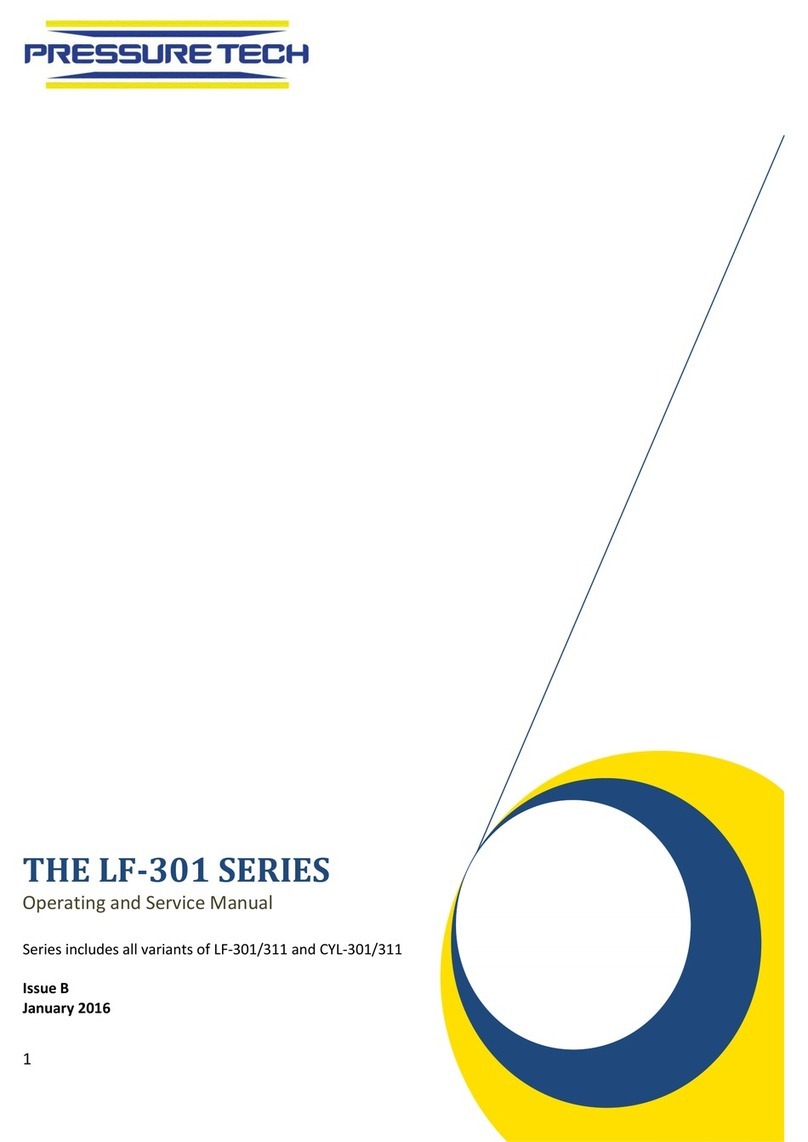
Pressure Tech
Pressure Tech LF-301 SERIES Service manual
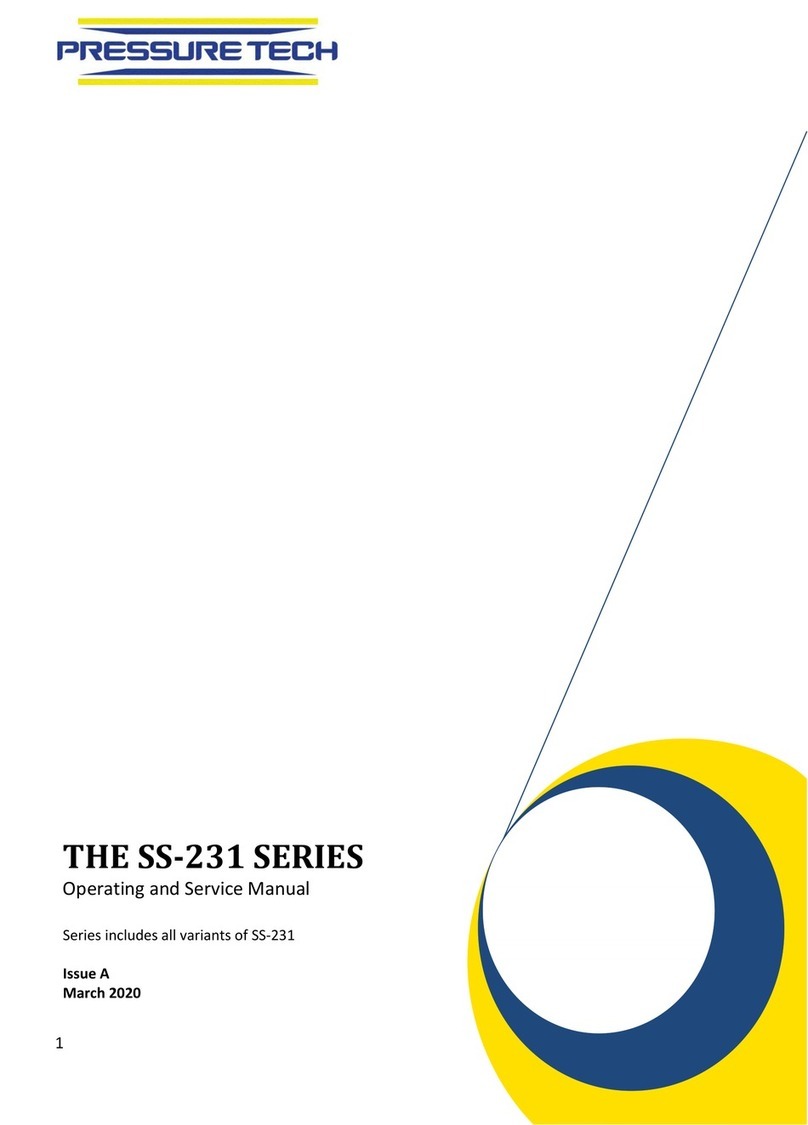
Pressure Tech
Pressure Tech SS-231 Series Service manual

Pressure Tech
Pressure Tech LF-792 Series Service manual
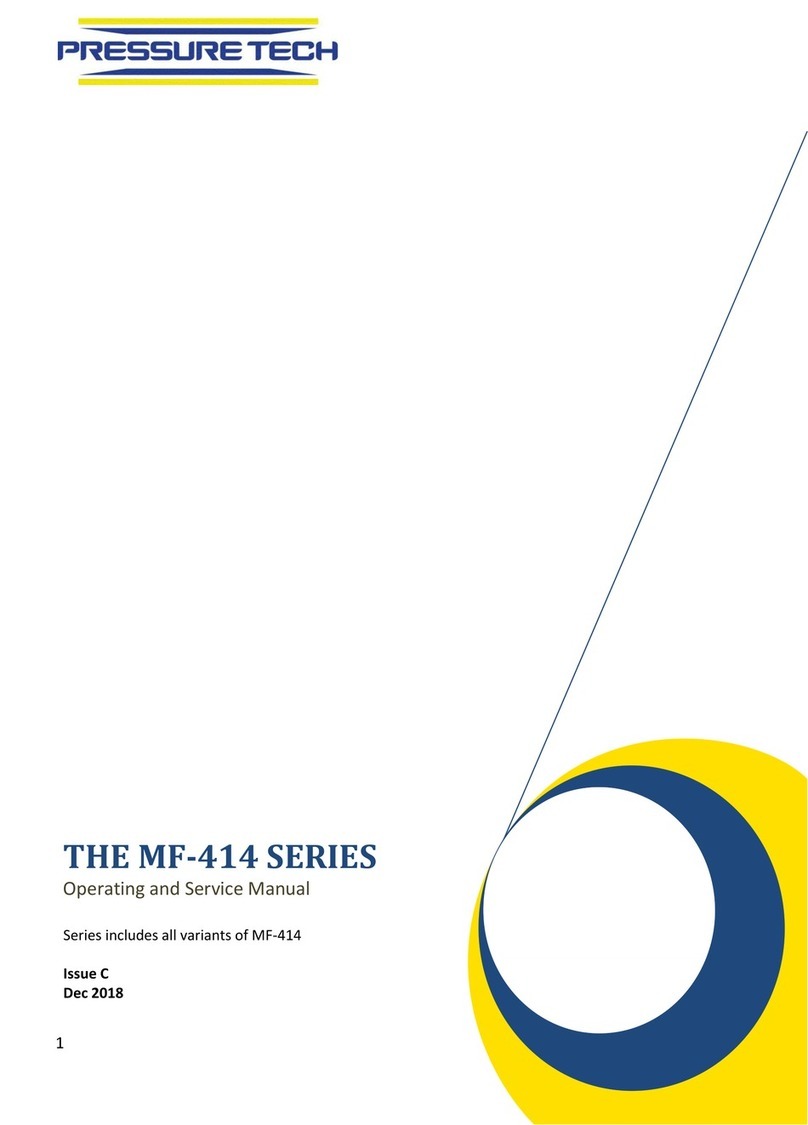
Pressure Tech
Pressure Tech MF-414 Series Service manual
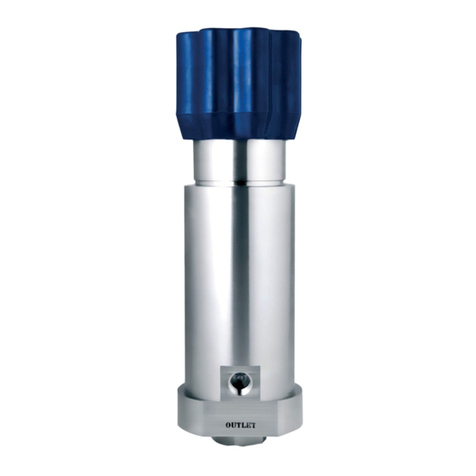
Pressure Tech
Pressure Tech LF-540 Series Service manual

Pressure Tech
Pressure Tech THE SS-414 Series Service manual
